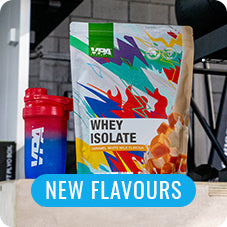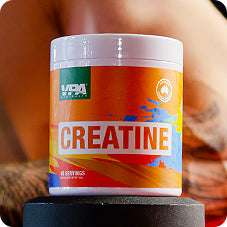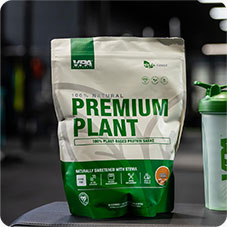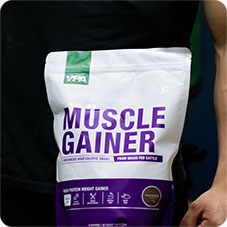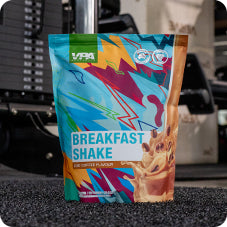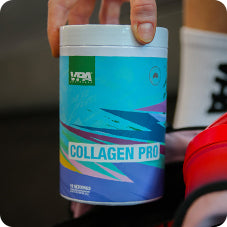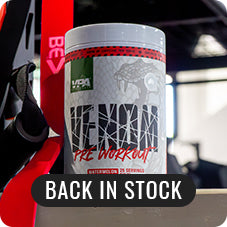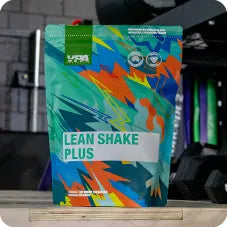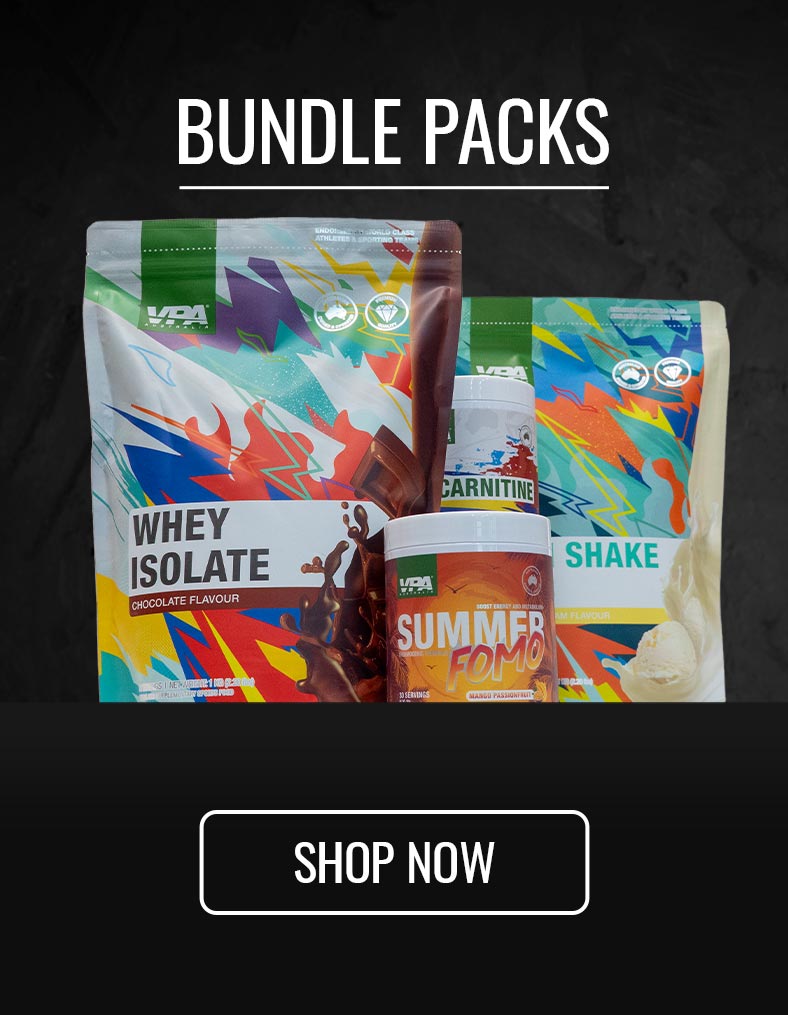- $0.00 AUD Subtotal
Body Type Diet: How to Eat for Your Ectomorph, Mesomorph or Endomorph Build
September 11, 2025 7 min read

TL;DR
Diets based on body type are based on the three main somatotypes (body types): ectomorph, mesomorph, and endomorph. While most people are a mix of these types (body type hybrids), understanding your dominant traits can help guide your nutrition, training, and supplement choices to achieve the body you desire.
-
Ectomorphs are naturally slender, with fast metabolisms and often struggle to gain muscle or weight. They require higher-calorie, nutrient-dense meals with a macronutrient breakdown of approximately 45% carbohydrates, 35% protein, and 20% fat. Eating 5-6 smaller meals daily supports energy and prevents muscle breakdown. The best foods include lean meats, rice, oats, nuts, and avocados. Supplements like whey protein isolate, muscle gainers, and creatine monohydrate can help boost strength, size, and recovery.
-
Mesomorphs have naturally athletic builds, gain muscle easily, and respond well to training. They thrive on a balanced diet: roughly 40-50% carbohydrates, 30-35% protein, and the rest from healthy fats. Carbohydrates should be adjusted depending on training intensity - more on workout days and less on rest days. Whole foods, such as chicken, fish, lentils, sweet potatoes, and avocados, are best. Supplements like whey protein, creatine, and pre-workout support optimal performance.
-
Endomorphs tend to store fat more easily due to their slower metabolism, but they build strong muscle quickly. Their diet should focus on lower carbohydrates and higher protein and fat, with approximately 30% carbohydrates, 35% protein, and 35% fat. Carbs should mainly come from whole-food sources, such as beans, quinoa, and leafy greens, and be timed around workouts. Supplements like meal replacement shakes, micellar casein, and creatine help maintain muscle mass and promote quick recovery, while also managing body fat.
Training tips:
-
Ectomorphs: heavy lifts, minimal cardio, lots of recovery.
-
Mesomorphs: mix strength, hypertrophy, and cardio.
-
Endomorphs: resistance training plus higher-volume cardio (HIIT).
Bottom line: Your body type diet is a starting point, not a rulebook. Focus on achieving a calorie balance, maintaining a high protein intake, consuming quality nutrition, and maintaining consistency in your workouts. Here, supplements can bridge the gaps and accelerate progress.
Estimated reading time: 7-8 minutes
What Are the 3 Body Types?
The three main body types, 1 also known as somatotypes, are ectomorph, mesomorph, and endomorph. These were derived from the somatotype model, first proposed by William Sheldon in the 1940s.
Even though modern science considers the body type diet more of a framework than a strict rule, the categories can still help you understand fair differences in metabolism and training responses, and what one should eat based on body type to maintain an optimum body composition.
| Body Type | Typical Traits | Metabolism | Strengths | Challenges |
| Ectomorph | Tall, slender, low muscle/fat | Fast | Naturally lean, resilient against fat gain | Struggles to gain muscle or weight |
| Mesomorph | Naturally muscular, broad shoulders, narrow waist | Moderate | Gains muscle easily, athletic build | Can gain fat with a poor diet |
| Endomorph | Rounder frame, wide waist/hips, higher fat storage | Slower | Strong muscle base, robust in strength training | Finds fat loss harder
|
However, these aren’t hard-drawn lines. Most people are a combination rather than an exact match. For example, you might be an ecto-meso hybrid. Still, recognising your dominant tendencies and traits can guide your approach towards working out and food habits.
The Ectomorph Diet
Typical Traits
Ectomorphs are often referred to as people who are “skinny.” They usually have long limbs, smaller joints, and difficulty adding size. Their high metabolic rate means calories burn quickly, leaving them with limited energy reserves for training and recovery, unless replenished the right way.
Nutritional Focus
Ectomorphs should prioritise high-calorie, nutrient-dense meals. Since ectomorphs lack muscle mass, they need to boost their protein intake.
A good macronutrient breakdown is approximately 45% carbohydrates, 35% protein, and 20% fat. Carbohydrates are vital for fuelling their rapid metabolism, while protein supports lean muscle growth. Eating five to six smaller meals daily helps sustain energy and prevent muscle breakdown, also known as catabolism.
-
Breakfast: oats with banana, peanut butter, and whey protein, eggs
-
Lunch: rice, chicken, vegetables, olive oil, lean steak, beef
-
Snack: smoothie with milk, fruit, mass gainer, and seeds (almonds, peanuts, sunflower seeds)
-
Dinner: salmon, quinoa, broccoli, avocado, whole wheat bread
-
Evening: cottage cheese or micellar casein protein powder for overnight recovery
Best Protein Sources & Supplements
-
Whole foods: lean meats, eggs, dairy, tofu
-
Complex carbs: rice, oats, pasta, sweet potato
-
Healthy fats: nuts, avocado, olive oil, fatty fish
- Supplements: VPA WPI – Whey Protein Isolate Powder (delivering 27g of premium protein per serving - excellent for muscle building and recovery), VPA’s Muscle Gainer for calorie boost (packed with carbohydrates and muscle-building nutrients), and VPA’s Creatine Monohydrate to increase strength, recovery, and training performance.
The Mesomorph Diet
Typical Traits
Mesomorphs are the traditionally “fit” body type, with naturally athletic physiques. They often have broad shoulders, defined muscles, and lower body fat. They respond quickly to both resistance training and cardiovascular activities, but may gain fat if their diet is not well-monitored.
Nutritional Focus
Mesomorphs thrive on balanced nutrition (basically 5-6 small meals a day for consistent energy), managing calories in a way that helps them build muscle and maintain fat percentage. Mesomorphs are most adaptable to varied training. A macronutrient ratio of 40-50% 3 carbohydrates, 30-35% protein, and the remaining calories from healthy fats generally works well. They can manipulate carbs depending on training intensity, that is, increase intake on training days, and practice moderation on rest days.
Sample food approach:
-
Breakfast: scrambled eggs, spinach, sourdough bread, half avocado
-
Lunch: grilled chicken, sweet potato, salad
-
Snack: Greek yoghurt with fruit and nuts
-
Dinner: lean beef, brown rice, vegetables, boiled sweet potato
-
Evening: shake with VPA’s Whey Protein range
Best Protein Sources & Supplements
-
Whole foods: beef, poultry, fish, lentils, dairy
-
Carbs: potatoes, rice, fruits, vegetables
-
Fats: nuts, olive oil, avocado
-
Supplements: VPA Whey Protein, creatine monohydrate, and other pre-workout supplements for optimal strength sessions.
The Endomorph Diet
Typical Traits
Endomorph body types typically have a broader, more rounded physique. They can build muscle efficiently but store fat more easily due to slower metabolisms. They may be slower to lose fat but excel in powerlifting or strength sports.
Nutritional Focus
When comparing endomorphs vs. ectomorphs, we discover that endomorphs benefit from a lower-carb, higher-protein, and higher-fat plan. A suggested ratio 4 is 30% carbs, 35% protein, and 35% fat. Restricting refined carbs, focusing on whole-food sources, and timing carbs around workouts to help regulate blood sugar, fuel up energy when needed, and prevent excess fat storage.
Sample food approach:
-
Breakfast: vegetable omelette with avocado
-
Lunch: grilled salmon, asparagus, quinoa, brown rice
-
Snack: nuts, seeds, oats
-
Dinner: turkey breast, leafy greens, olive oil dressing, cruciferous vegetables
-
Alternate: VPA Lean Shake Plus – Meal Replacement Powder
- Proteins: chicken, turkey, fish, eggs
- Carbs: quinoa, lentils, beans, leafy vegetables
-
Fats: olive oil, seeds, nuts
Best Protein Sources & Supplements
- VPA Lean Shake Plus: Meal Replacement Powder for controlled calories
- Micellar casein protein powder for overnight recovery
- Creatine monohydrate to support lean mass while dieting
Training Tips for Each Body Type
-
Ectomorphs: Train with heavy compound lifts, low to moderate reps, and avoid excessive cardio. Recovery and sleep are vital.
-
Mesomorphs: Alternate strength and hypertrophy training with moderate cardio. They benefit from variety and balance.
-
Endomorphs: For endomorph body types, combine resistance training with higher-volume cardio (both HIIT and steady-state). Consistency is key to managing fat gain and maintaining muscle mass.
The Limitations of Body Type Diets
Although popular, the diet based on the body type model has limitations. Body type diets are best used as guides, not rigid rules. Scientific consensus suggests the following factors matter more than somatotypes and strongly influence results:
-
genetics,
-
calorie intake,
-
macronutrient ratios,
-
training
-
lifestyle,
-
hormones,
-
environment (culture, food habits, etc.)
How to Find the Best Diet for You
To personalise your plan:
-
Calorie balance matters most: eat above your maintenance level for growth and weight gain, and below your maintenance level for fat loss.
-
Protein intake is non-negotiable: aim for 1.6-2.2g/kg body weight daily.
-
Carbs and fats can be flexible: adjust based on training style and personal preference.
-
Supplements can support any physique type: whey protein in Australia, micellar casein protein powder, creatine monohydrate, and pre-workout products.
-
Use tools like a Protein Powder & Gym Supplement Quiz to match supplements with your body goals to support your perfect, 10/10 body.
FAQs
What body type am I?
To determine your body type, consider your frame, metabolism, how your body responds to the foods you eat, and your training response. You may lean towards ectomorph, mesomorph, or endomorph traits, but most people are hybrids.
Can my body type change?
While your skeletal structure remains relatively constant, diet and training can significantly alter muscle and fat distribution, ultimately helping you achieve your ideal body composition.
Which body type loses weight fastest?
Ectomorphs typically lose fat quickly due to faster metabolisms. Endomorphs need structured diets and consistent training to shed off stubborn fat.
Do I need supplements for my body type?
Not essential, but they are practical and can help speed up the process of achieving your body goals. WPI – Whey Protein Isolate Powder, mass gainer, or Lean Shake Plus – Meal Replacement Powder, creatine monohydrate, and other supplements can help fill nutritional gaps.
Final Word: Eat Smart for Your Body and Goals
A body type diet provides a framework, but results come from consistency, calorie control, quality nutrition, and all the actions you take to balance your hormonal health and overall well-being. Whether you’re a skinny body type looking to bulk, a mesomorph fine-tuning your physique, or an endomorph seeking fat loss, the key is evidence-based strategies supported by careful supplementation.
References:
-
Cave K. Body types: mesomorph, ectomorph, & endomorph explained. NASM. Accessed August 27, 2025. https://blog.nasm.org/body-types-mesomorph-ectomorphs-endomorphs-explained
-
Migala J. Ectomorph diet: food list, sample menu, benefits, more. Everyday Health. Updated November 6, 2022. Accessed August 27, 2025. https://www.everydayhealth.com/diet-nutrition/ectomorph-diet/#:~:text=But%20ectomorphs%20lack%20muscle%20mass,%2820%20percent%20of%20calories%29
-
Cave K. What is a mesomorph diet: food lists, sample menus, benefits & beyond. NASM. Accessed August 27, 2025. https://blog.nasm.org/what-is-a-mesomorph-diet
-
Mehta P. What to know about the endomorph body type. WebMD. Medically reviewed by Wheeler T. Reviewed November 30, 2024. Accessed August 27, 2025. https://www.webmd.com/fitness-exercise/what-to-know-about-endomorph-body-type
-
Cave K. The endomorph diet essentials: food lists, sample menus, benefits & beyond. NASM. Published December 6, 2023. Accessed August 27, 2025. https://blog.nasm.org/endomorph-diet-guide#:~:text=Fish%20%28Such%20as%20salmon%20and,Day%203
Also in Featured

Creatine Capsules vs Powder — Which Is Better for Strength and Performance?
November 06, 2025 6 min read
Read More
Running Gels Explained — What They Are, How They Work, and When to Use Them
November 06, 2025 10 min read
Read More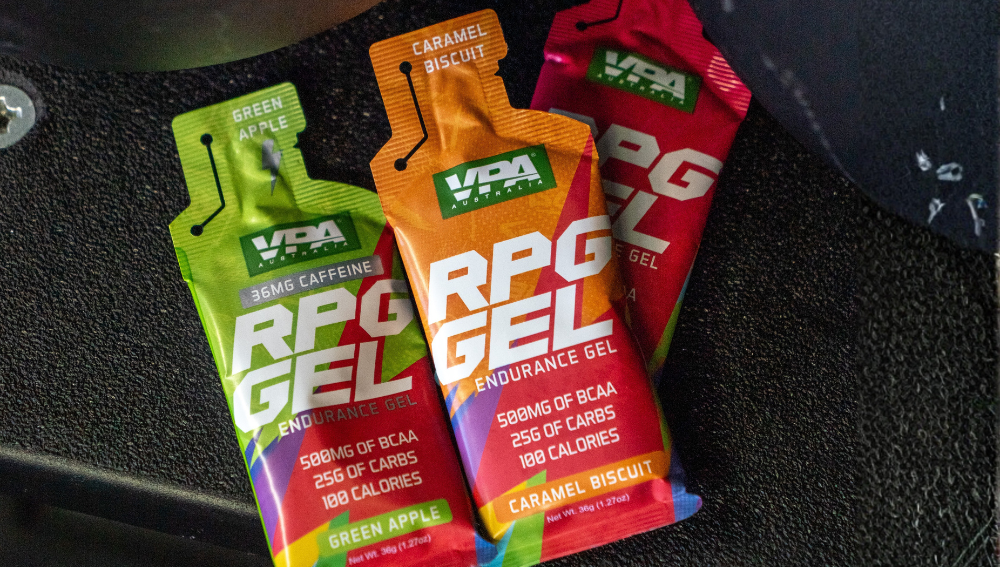
Why Energy Gels Are a Game-Changer for HYROX Athletes and Functional Fitness Training
October 15, 2025 6 min read
Read More Recent Articles
- Creatine Capsules vs Powder — Which Is Better for Strength and Performance?
- Running Gels Explained — What They Are, How They Work, and When to Use Them
- Why Energy Gels Are a Game-Changer for HYROX Athletes and Functional Fitness Training
- Body Type Diet: How to Eat for Your Ectomorph, Mesomorph or Endomorph Build
- The Best Way to Take Creatine for Maximum Results (2025 Guide)
- Creatine Gummies Scam? What You Need to Know vs Powder
- 10 Proven Whey Protein Benefits (and Why WPI Might Be the Best Option)
- Third-Party Tested Supplements in Australia: Why It Matters More Than Ever
- 7 Best Protein Powders for Weight Loss in Australia (Updated 2025)
- Prebiotic Collagen Protein for Gut Health and Weight Loss: What You Should Know

